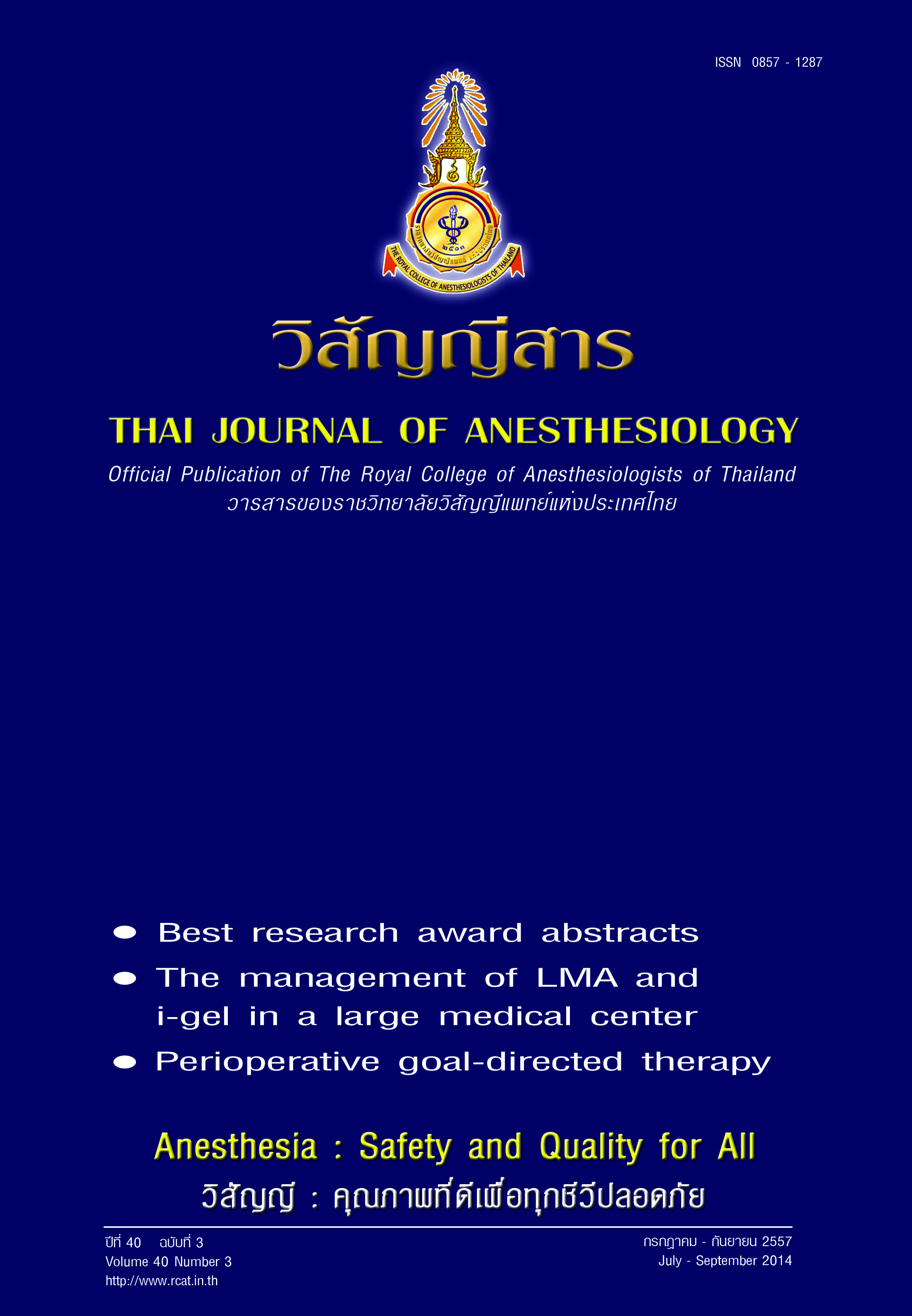The Success Rate of Sedation in Esophagogastroduodenoscopy by using Fentanyl and Midazolam in Combination with Topical Lidocaine
Main Article Content
Abstract
Background: Sedation comforts patients during esophagogastroduodenoscope (EGD), but complications can occur from inappropriate depth of anesthesia. Hence, balance has to be adjusted between patient’s intolerance and complication. In Siriraj hospital, moderate sedation technique has been used to supplement topical anesthesia for EGD. This study aims to evaluate the success rate in EGD using moderate sedation with fentanyl and midazolam combined with topical lidocaine spray, satisfaction from both patient’s and endoscopist’s perspective, time to recovery, and complications.
Methods: The study included ambulatory patients, age 18 - 75. Patients who are at risk of aspiration, or have American Society of Anesthesiologists (ASA) physical status of class more than III, or expected difficult airway are excluded. Before EGD, patients were given viscous lidocaine solution and lidocaine spray at pharyngeal area, and combined intravenous sedated with fentanyl 1 mcg/kg and midazolam 20 mcg/kg. If patients could not tolerate EGD, additional dose of fentanyl and midazolam would be given, and then propofol infusion subsequently. Success was defined as EGD completion without patient’s intolerant expression, using sedation only with fentanyl and midazolam. Complications were observed both in endoscopic suite and at recovery room. Satisfaction had been rated from patients and endoscopists after procedure. Data was analyzed using descriptive statistics with frequency and percentage.
Results: Eighty - two patients were enrolled in the study. All of them completed the procedure, but two patients required another dose of fentanyl and midazolam. None had to receive propofol infusion. Seventy-six participants (92.7%) were satisfied with the sedation technique, while endoscopists had 100% satisfaction rate. After removed the scope, forty - nine patients (59.7%) immediately responded to verbal command. The average time after EGD completion until patient got to follow command was 1.4 minute. The four most complications found during EGD and at recovery room were bradycardia (19.5%, 23.2%), tachycardia (13.4%, 7.3%), hypertension (6.1%, 7.3%) and hypotension (4.9%, 6.1%), respectively. However, no resuscitating drugs had to be given to maintain the patient’s vital sign. One patient (1.2%) had desaturation during EGD, which was corrected by airway maneuver and increased inspired oxygen fraction. Nausea and vomiting was found in one patient at recovery room.
Conclusion: The combination of intravenous fentanyl and midazolam, with topical lidocaine resulted in a good satisfaction rate from both patients and endoscopists with acceptable complications. However, experienced anesthesia providers are needed to conduct sedation in order to ensure no serious adverse event.


